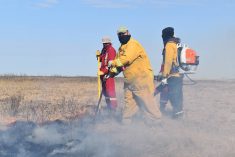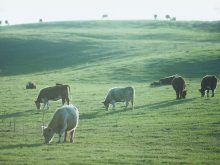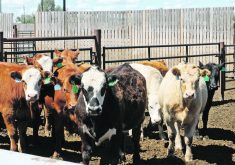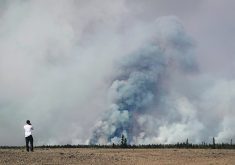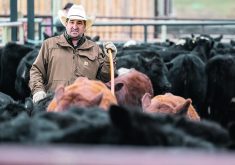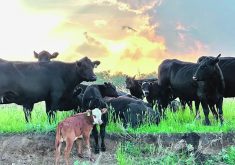Lately, there have been more incidents of clinical pneumonia deaths in cows.
Whether it is the classical mannheimia, also known as shipping fever, or a viral cause, these illnesses can be fatal to cows.
A bacterium called bibersteani and the virus influenza D are also being diagnosed as causes in recent years.
I can’t help but think with the poor air quality from the many out-of-control fires, that our cattle get compromised and stressed. Cattle have low lung capacity and require lots of oxygen in the blood to support the huge digestive process, so we shouldn’t be surprised to see pneumonias in adult cattle from time to time.
Read Also

House ag committee to undertake several studies
The House of Commons standing agriculture committee has set its agenda for the coming months. Members began the fall sitting with a two-hour update on international trade
In practice, these may occur as one-offs.
I remember experiences with several older cows at auction markets coming down with classical shipping fever pneumonia. The stressors of transportation and commingling were the main contributors.
The situation becomes more concerning with multiple cases.
It is a good idea to check cattle frequently but with wildfires and smoke, producers might consider checking more often.
Calf checking is common, but it is equally important to check cows.
In cases of sudden cow deaths or if there are indications of a respiratory issue, then an autopsy should be conducted to find the cause.
Cows seldom get pneumonia and die, so are often not observed as closely as calves.
Clinical cases are usually easy to spot with rapid breathing and sometimes nasal discharge. In worse cases, there can be foaming at the mouth and grunting from pain.
Cows, being flight animals, are good at hiding symptoms, which is why the first noticeable signs of illness may actually be a couple days into the pneumonia. Cows are often gaunt and, like calves, will run a fever. The one main bacteria produces what is called a leukotoxin, so cattle can become fevered and depressed quickly.
With treatment, producers can usually use the same products they use on calves with similar problems. In my experience, cows bounce back quickly if treatment is started in time and it is a bacterial infection that responds to antibiotics.
If the illness is caused by a viral infection, prognosis is poor for cows, just as it is for calves.
Whenever there is increased stress or immunosuppression, cows and mature bulls are susceptible to pneumonia because of poor lung capacity.
Pneumonia should be considered, even in isolated cases, whenever we notice signs of depression and increased respiratory rates, frothing and fever.
If there is more than one case in mature stock, producers must check for sources of animal stress and aspects of the environment that could promote the spread of the organism.
Mature cows are usually vaccinated with the five-way viral vaccine each year as a protection against the main forms of abortion, but they are also protected and given good immunity to these viral pathogens.
Immunity from respiratory bacterial pathogens, such as mannheimia, pasteurella and histophilus, will wane quickly from the shots the animals were given as calves. Also, especially with mannheimia and pasteurella, these pathogens are present in low numbers in the respiratory tracts of cattle anyway.
Many veterinarians recommend using the newer intranasal vaccines to increase protection when a known stress is happening, such as attending a cattle show, being commingled or transported.
Intranasal vaccines are also recommended to build herd immunity quickly if mature stock are getting vaccinations in the face of an outbreak.
Some producers are choosing to give calves vaccines that contain the mannheimia component, instead of vaccinating with only the five-way viral vaccines, in instances where they are having problems with more mature cows.
It is important to get a diagnosis because the methods of treatment differ for viral cases, bacterial cases and mixed cases.
If the problem is pasteurella, only one vaccine is available. If bibersteani or influenza D are the cause, there is no vaccination available. In those cases, vigilant observation and early treatment are the only courses of action.
If the problem is found to be mannheimia, animals usually respond to standard antibiotics.
I always urge producers to get autopsies on mature cows or bulls that die unexpectedly. It is covered by the BSE program in some provinces and the information may be valuable in assessing the rest of the herd.
Autopsies could also detect lungworm or emphysema problems.
Our goal is to help keep your cows alive, or at least salvageable for slaughter, yet statistics show that pneumonia is the second highest cause of death next to digestive disorders in mature cows. It’s a condition worth paying attention to.
Roy Lewis works as a veterinarian in Alberta.





